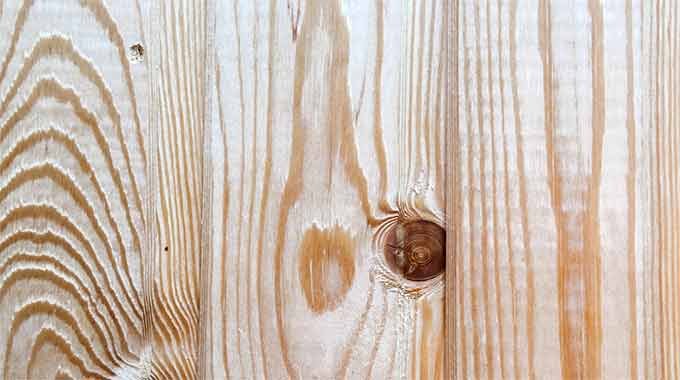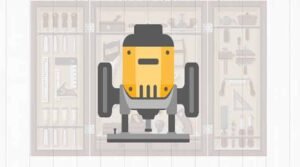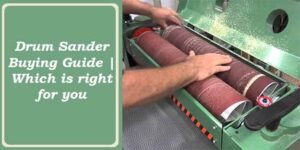Working With Wood Defects in Lumber – Learn Everything’s
Nothing in nature is ever perfect. There are always minor or major defects. A good example of this is trees. Even the most beautiful tree has some defects or abnormalities found in its wood. Choose the best oscillating tool for woodworking.
There are multiple factors that contribute to wood developing abnormalities. Some are the result of natural defects from things like a broken limb or rapid tree growth. Abnormalities could also result from insect infestation or the growth of fungus.
Table of Contents
Examples of Natural Wood Defects

Wood grows and shrinks depending on the amount of humidity in the air. And this rapid growth and shrinking can cause abnormalities to occur in the wood.
Man-made factors, including mechanical defects, improper drying, improper handling and storage, or improper sawing and machining, can cause abnormalities or defects to appear in the wood that you use for your projects.
Whether the abnormality or defect is caused by nature or whether it is caused because of human error, when a piece of wood is severely damaged, it can reduce its economic value and put its structural integrity at risk. In some cases, abnormalities can speed up the rate at which your wood decays.
Let’s take a few minutes and look at some of the factors that contribute to abnormalities in wood as well as the types of wood defects they create.
Nature takes a toll on trees and will lead to natural defects in timber. If you have worked with wood for any length of time, it is likely that you are quite familiar with some of these defects. Common examples of defects include:
Bark Pockets

These form when a piece of the bark protrudes into the lumber. This is not just an aesthetic defect, but it is something that affects the structural integrity of the wood.
Bird Pecks
Woodpeckers are notorious for drilling holes into trees. They do this attempting to scare insects that live in the trees out of hiding in order to eat them. By pecking the trees, birds cause minor injuries, and these injuries affect the appearance of the grain of the tree.
Burls
Burls are growths that form on a tree when it is injured early in its life. Because of the trauma the tree suffers early on, it develops irregular growths on the body of the timber. As the tree grows, so does the growth. The pattern of the wood growth is unique, and it is prized by furniture makers looking to create something that highlights different types of wood grain.
Coarse Grain
If a tree grows too fast, the rings that it develops every year are thick. The wood will then have coarse grain and not be as strong.
Fungal Damage

When a tree is affected by fungus, the wood is weak, and it is a different color than what is normal for a tree of said species. Examples of fungal damage include:
- Blue Stain
- Brown Rot
- Dry Rot
- Heart Rot
- Wet Rot
- White Rot
Insects
There are numerous insects that eat wood. Other insects will use the bark wood as a place to raise their young. Some insects only cause minor damage, but others can completely destroy a tree. Common insects that negatively affect wood include:
- Wood Boring Beetles
- Pin-hole Borers
- Termites
Knots

Knots happen in wood when the base of a branch or a limb is broken off or cut off from a tree. The part of the branch that still remains gets nourishment from the tree and eventually turns into the hard dark rings that are called knots. Knots are a source of weakness and usually render the wood unsound.
Examples of knots include:
- Sound Knots
- Unsound or Loose Knots
- Encased Knots
- Spike Knots
- Knot Holes
The above is just a sampling of the defects in lumber caused by nature. Other wood defects caused by nature include:
- Raised Grain
- Shakes
- Splits
- Stains
- Spalting
- Twisted Fibers
Wood Defects Caused by Conversion
When we talk about conversion, what we are talking about is taking a tree and cutting it into wood that you can use for your furniture or construction projects. Some of the defects that occur during this process include:

Chip Marks
Chip marks happen when there is a depression or indention in the surface of the board. This happens because wood shavings or chips become embedded in the surface during the cutting process or when you are using a planer or a joiner.
Torn Grain
This is an irregularity that is seen on the surface of the board. It is usually caused by a planer tearing or breaking the fibers below the level of the dressed surface.
Machine Burn
As its name implies, this happens when the surface of the wood is dark because the machine knives overheated the wood.
Wood Defects As a Result of Seasoning
When we talk about seasoning, we are talking about drying wood. This can be done in the open air, or you may use a kiln. These defects include:
Bowing

This is when a curve is formed in the wood in the direction of the length of the timber. It can give an appearance as if the piece of wood is traveling over a hump or over a hill.
Crook
This happens when the board is flat, but the ends pull away from the center. This is another example of a board warping.
Twisting
This is where the board curves along its length. Its appearance is similar to that of a propeller.
How to Deal with Defects in Your Wood

It can be a challenge dealing with defects in your wood. For this reason, the majority of people choose to stay away from defective wood.
However, there is a small niche of people who enjoy working with wood that is defective because certain defects can actually improve the appearance of your finished product. These individuals believe that the defects add character to the wood. And when you look at some of the products these individuals have produced, they are really quite beautiful.
Some woodworkers will buy a lower grade wood simply because it is less expensive. They do not mind taking the time to correct any wood defects. They are content using a planer, waning sticks, and the whole host of other tools available to take an imperfect piece of wood and turn it into something that is beautiful and usable.
The Conclusion
Since a lot of the defects in lumber happen during the drying process, some woodworkers have opted to purchase green wood and then dry it themselves. Woodworking is an enjoyable hobby. For many, it is a profitable way to earn a living. Choosing the right wood for your project is important since it will affect the stability of your project as well as its final appearance.








Post Comment